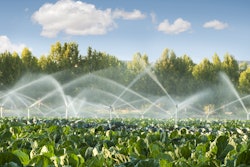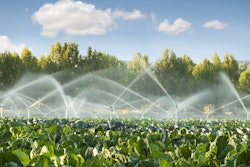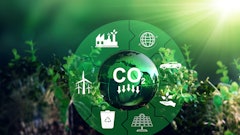
Let’s ask ourselves, are we talking about responsible or ethical sourcing? Environmentally, economically or socially sustainable sourcing? Whose perspective comes first when new suppliers are onboarded or old favorites are dropped? Are purchasing policies designed to cater to consumers or support suppliers?
Sustainable often describes organic, grass-fed, cage-free or any one or combination of a whole host of “practices” that go into the production of a certain food product. Responsible is a more subjective approach, sometimes attributed to consumer level purchase, but can also be corporate, which includes the level of thought given to the decision to purchase one product over another. Ethical almost always refers to behaviors or treatment of either humans involved in production, avoiding unfair trading practices or slavery of animals in reference to confinement or slaughter conditions.
Do these attributes help or hinder the producers and buyers involved, and in what ways? In every agricultural operation, there is a balance of people/planet/profit, but it may not match up with what’s on the buyers’ list. When any one player in the food supply chain is blindly focused on one outcome, the others will suffer. For example, a producer that only thinks of environmental issues may produce a product no one can afford. Another producer thinking only of providing their healthy, fresh products free of cost for the good of society may not last long as a business. The third, focused only on their pocketbook, may overlook human rights or food safety, therefore suffering devastating consequences. Similarly, when buyers focus in just one direction, other options, maybe even cheaper and more sustainable ones, go unnoticed.
In the pursuit of sourcing food products that “do no harm,” surplus, or agricultural production that has been overlooked, are those products often produced in overabundance. Because surplus production has already used up irreplaceable environmental and economic resources, it can benefit society without starting from scratch. But, even an emphasis on surplus products is not without fault, depending on where in the food supply chain the impact lands.
Coming down to ground level, if food buyers were to shift their focus to seek out surplus food, many things could happen.
To start with the good (or bad depending on who you are) news, buyers may be able to make their purchasing programs more sustainable by using products classified as surplus because the approach of harvesting everything produced uses high-impact resources more efficiently. However, the lower prices may shift their demand in this direction permanently. If growers are consistently asked for the “extras,” the “excess,” or the lowest quality, growers will not be able to sell the products they focus on producing in abundance -- their top-tier quality -- and may lose money.
The rest of the impacts of sourcing surplus, though, could be considered good news for procurement programs.
First, removing these products from their destination as waste promotes food systems circularity and reduces food loss and food waste. This outcome cannot be overstated as critical to the longevity of the planet. Reimagining the systems that now contribute to a linear take-make-waste approach will dramatically affect where we are in the future. Food waste that ends up in the landfill creates methane as it breaks down, which contributes to climate change. In fact, reducing food waste by 50% by the year 2030 is so important globally, that the goal has been incorporated into the sustainable development goals of several food producers, and has been committed to by the USDA, the FDA and the EPA.
Growers cannot often reduce the amount of food they plant because the risk of not having what buyers need far outweighs the costs of producing multiple rounds of a crop. Their customer could be lost for a few seasons, or longer. In addition, crop insurance is not designed to support every crop, especially those considered “food” by consumers. Therefore, most growers have surplus. This fact remains hidden, though, because the quality is lower than what consumers expect to see, and lower than what growers want to promote as their products. What grower could stand by a bell pepper that won’t stand up on its own, and not feel a little ashamed that they grew it? That kind of quality is quite simply not representative of their best work. Surely that’s widely relatable.
If surplus is akin to abundance, then the height of, and the later part of the season, is when it’s available. When the price is low and supply is good. If you have ever gardened, you’re familiar with this concept. Have you ever been inundated with tomatoes or zucchini? So much so, that the recipes start to get really creative out of necessity? Or, you looked into canning and freezing so these products would be available later? Scale this up, and you’ll understand that growers run up against this in every good year. Buyers simply stop calling for the crop because it’s gone on too long.
On the other hand, eating seasonally would change a lot of things for the United States. Taking a chef’s approach, would consumers rethink the value of ingredients? What if we only ate apples for six months, in those regions that they are grown? Supply chains would shorten, and the need for specialized storage would decrease. And, where does that lead? A reduction in the production of CO2 equivalents. Maybe sourcing surplus is sustainable after all. Another example is, what if we ate broccoli in the fall, winter and spring, but not in the summer in those regions with extreme heat? This would result in less need for ice slurry stations in trucking and lower fuel needs for refrigerated trucks. Again, this example looks positive, or maybe this decision could even be considered “responsible.”
What would this do, though, to consumers? Would it be bad news for them? Certain items would be missed, certainly. But, the low prices on those products in abundance may drive up demand. Eating trends would be ever so gently guided into a sustainable direction. We have had a major supply chain disruption thanks to the Coronavirus disease (COVID-19). Are U.S. consumers today just a little more educated on the fragility of the nation’s so-called “abundant food supply?” This newfound patience could be seen as an increased willingness to cope with a changing food landscape.
Depending on the intent of sourcing sustainably, whether it is to please the consumer or support the grower, the program focus could shift in a variety of directions. Sourcing surplus will ensure that the needle is moved toward seasonal eating and shorter supply chains. Consider the impact on grower partners as these decisions make their way through the department.



















